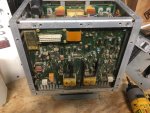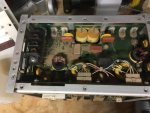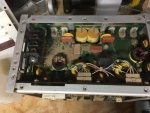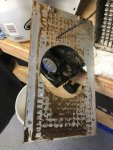g2reeves
New member
- 15
- 0
- 3
- Location
- Houston, Texas
All,
Thanks to all for previous advice with my MEP-831A unit issues. While Hurricane Harvey rages outside, I've been tinkering with, and gave up on, my second MEP-831A and started parting it out. I wanted to keep its inverter as a spare for my running unit, but noticed dirt caked around the voltage selector switched and decided to open the case and take a look. It's filthy, full of Afghanistan or Iraqi or maybe just good old west Texas dirt and I'm wondering if there's a safe way to clean all this gunk out. In high school electronics class we had spray cleaner to remove soldering residues and the like and wondering if I can do the same to this. It's been in my house for two years without making power, and who knows with GL before that, so I trust the capacitors will have lost charge by this point. Any thoughts would be appreciated!


Thanks to all for previous advice with my MEP-831A unit issues. While Hurricane Harvey rages outside, I've been tinkering with, and gave up on, my second MEP-831A and started parting it out. I wanted to keep its inverter as a spare for my running unit, but noticed dirt caked around the voltage selector switched and decided to open the case and take a look. It's filthy, full of Afghanistan or Iraqi or maybe just good old west Texas dirt and I'm wondering if there's a safe way to clean all this gunk out. In high school electronics class we had spray cleaner to remove soldering residues and the like and wondering if I can do the same to this. It's been in my house for two years without making power, and who knows with GL before that, so I trust the capacitors will have lost charge by this point. Any thoughts would be appreciated!







 . Next up is an operational test in my running MEP-831A, maybe next weekend. I'm also searching for a good filter solution for the inverter inlet and will post back once I get something together that will work.
. Next up is an operational test in my running MEP-831A, maybe next weekend. I'm also searching for a good filter solution for the inverter inlet and will post back once I get something together that will work.